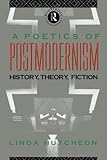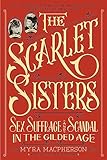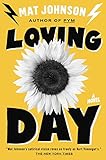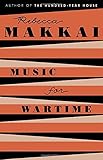Nothing triggers my raging Impostor Syndrome quite like being asked to account for my year in reading by a fancy literary website. What did I read this year that was good — both in the sense that I liked it, and the sense that I wouldn’t be embarrassed to admit I liked it? Did I read anything good this year? Did I read anything at all? What is a book?
I have receipts that prove I bought a lot of books this year, at least, so let’s start with a sampling of 2015 purchases, separated according to my two main reasons for reading at the moment.
1. Because I’m Writing a Work of “Historiographic Metafiction” about 19th-Century Feminists, Plus a Critical Companion Piece, and if I Don’t Screw It up, I’ll Get a Ph.D. at the End of It
 A Poetics of Postmodernism: History, Theory, Fiction by Linda Hutcheon
A Poetics of Postmodernism: History, Theory, Fiction by Linda Hutcheon
Reconstruction: America’s Unfinished Revolution, 1863-1877 by Eric Foner
Trial and Triumph by Frances Ellen Watkins Harper
The Selected Papers of Elizabeth Cady Stanton and Susan B. Anthony, Vol. II: Against an Aristocracy of Sex, 1866-1873 edited by Ann D. Gordon
The Humbugs of the World by P.T. Barnum
Twelve Causes of Dishonesty by Henry Ward Beecher
Traps for the Young by Anthony Comstock
The Scarlet Sisters: Sex, Suffrage, and Scandal in the Gilded Age by Myra MacPherson
 Alias Grace; The Blind Assassin by Margaret Atwood
Alias Grace; The Blind Assassin by Margaret Atwood
Beloved by Toni Morrison
Possession by A.S. Byatt
Nights at the Circus by Angela Carter
The Passion by Jeanette Winterson
Gods Without Men by Hari Kunzru
2. Because, Occasionally, I Stop Working on My Dissertation/Checking Twitter Long Enough to Read for Pleasure
 Between the World and Me by Ta-Nehisi Coates
Between the World and Me by Ta-Nehisi Coates
The Golem and the Jinni by Helene Wecker
Luckiest Girl Alive by Jessica Knoll
The Round House by Louise Erdrich
We Believe the Children: A Moral Panic in the 1980s by Richard Beck
Saint Mazie by Jami Attenberg
The Sellout by Paul Beatty
Petite Mort by Beatrice Hitchman
Music for Wartime by Rebecca Makkai
Inconvenient People: Lunacy, Liberty, and Mad-Doctors in Victorian England by Sarah Wise
 Loving Day by Mat Johnson
Loving Day by Mat Johnson
Everything I Never Told You by Celeste Ng
The Grownup by Gillian Flynn
Cloudsplitter by Russell Banks
We Should All Be Feminists by Chimamanda Ngozi Adichie
The Leftovers by Tom Perrotta
Step Aside, Pops by Kate Beaton
If I had actually read all those books, I would feel I’d made a respectable enough showing, but the ratio of books I buy to books I read all the way through has always been about 10 to one. I’ve dipped into most of them, and I can’t imagine eventually finishing any of these books and being mortified that I once mentioned it near my own name in a post at a fancy literary website. But if I’m going to speak honestly about my year in reading — beyond just submitting “the entire fucking internet, front to back, endlessly” — then I should probably focus on books that I a) finished and b) remember well. Right?


 So I started thinking back month by month. In January, I spent my 40th birthday reading an ARC of Saint Mazie on the beach in Miami, falling in love with Jami Attenberg’s brave, witty, sexy, generous, heartbreaking heroine. In February, I reread Possession for the first time since college in the ’90s, marveling again at Byatt’s erudition, ambition, and perfectly calibrated storytelling. In March, I read Petite Mort, shortly after meeting Bea Hitchman and hearing her read from this twisty, brainy thriller that made me care about early cinematic techniques nearly as much as the central characters. In May, my preorder of Loving Day arrived, and in June, so did Music for Wartime; Mat Johnson and Rebecca Makkai have become drop-everything authors for me in the last few years, the kind who irresistibly combine intellectual seriousness with a total lack of self-seriousness. In July, on a rocky Canadian beach, I read Luckiest Girl Alive, which I honestly don’t remember much of now, but I remember enjoying it and thinking that, unlike Girl on the Train, it was not too unreasonably compared to Gone Girl. (Oh, right, I guess I also read Girl on the Train this year.) In August, my first solo book came out, and I started a tour that severely cut into my time for reading anything else, but I read a lot of fragments for school and blew through Step Aside, Pops in one highly satisfying hour.
So I started thinking back month by month. In January, I spent my 40th birthday reading an ARC of Saint Mazie on the beach in Miami, falling in love with Jami Attenberg’s brave, witty, sexy, generous, heartbreaking heroine. In February, I reread Possession for the first time since college in the ’90s, marveling again at Byatt’s erudition, ambition, and perfectly calibrated storytelling. In March, I read Petite Mort, shortly after meeting Bea Hitchman and hearing her read from this twisty, brainy thriller that made me care about early cinematic techniques nearly as much as the central characters. In May, my preorder of Loving Day arrived, and in June, so did Music for Wartime; Mat Johnson and Rebecca Makkai have become drop-everything authors for me in the last few years, the kind who irresistibly combine intellectual seriousness with a total lack of self-seriousness. In July, on a rocky Canadian beach, I read Luckiest Girl Alive, which I honestly don’t remember much of now, but I remember enjoying it and thinking that, unlike Girl on the Train, it was not too unreasonably compared to Gone Girl. (Oh, right, I guess I also read Girl on the Train this year.) In August, my first solo book came out, and I started a tour that severely cut into my time for reading anything else, but I read a lot of fragments for school and blew through Step Aside, Pops in one highly satisfying hour.
There were other books I finished in 2015 — more keep coming back to me — but those are the ones that came immediately to mind, a fact that now gives me pause (and should have much earlier). A large portion of my novel deals with the way white men in power play men of color and white women off against each other, encouraging us to fight each other for scraps, while even those are kept out of reach of women of color. It happened during the fight over the 15th Amendment, during the Civil Rights Movement, during the 2008 Democratic primaries, and it’s been happening in the academy and the literary world ever since it occurred to folks in charge, about 15 minutes ago, that reading lists composed entirely of white men are perhaps too narrow in scope. As a 21st-century ranty feminist, I like to think I’m above all that, and yet there’s my actual reading list from the past year: A bunch of white women, and one mixed-race man.
As I write this, people who care about writing, literary gossip, and the publishing industry are all abuzz over Claire Vaye Watkins’s essay “On Pandering,” which has become a sort of Rorschach blot for everyone’s writerly grievances. Me, I was so enraged by Stephen Elliott’s behavior toward Watkins (and lack of shame in writing about it publicly), I blocked out nearly everything else she wrote. But other writers I admire, from The Toast’s Nicole Chung to Booker winner Marlon James, swiftly noted that in addition to the white-guy pandering Watkins describes, there’s a whole lot of pandering to white ladies going on in the book world. Do those of us sharing the post so widely and enthusiastically even realize that?
Um.
As I said to Nicole on Twitter, I came out of my M.F.A. program 10 years ago well over being impressed by the Serious White Men Everyone Loves — I believe my exact words were “Fuck Denis Johnson and Cormac McCarthy” — but all I did was sub in writers who look more like me. When I write a new syllabus, I told her, I always think of 40 white women I love right away, then have to cut most of them to add writers of color — maybe even, when it’s a slow misandry day, a couple of men. I do make a point of diversifying every syllabus beyond a token author or two, but why is that always Step Two?
Because, although I buy work by writers of color, it seems I’m still far more likely to read and retain work by white women — especially ones I know in real life. I knew I leaned that way, but I wouldn’t have guessed the imbalance was so extreme before I sat down and took stock. (And that’s without even counting my failed attempt to read Elena Ferrante because fancy literary people are so bonkers for her.)
I can understand why it happens: books written by people similar to me absorb my attention most easily, and are thus the ones I resist countless distractions to finish. But a zillion years of white men feeling that way about books written by and for white men is, of course, how so many of us ended up feeling like they were the only audience worth writing for. It was bullshit when they did it, and it’s bullshit I need to consciously interrupt in my 2016 reading. My account of next year’s reading may not be any fancier than this, but it will probably be a lot more interesting.
More from A Year in Reading 2015
Don’t miss: A Year in Reading 2014, 2013, 2012, 2011, 2010, 2009, 2008, 2007, 2006, 2005
The good stuff: The Millions’ Notable articles
The motherlode: The Millions’ Books and Reviews
Like what you see? Learn about 5 insanely easy ways to Support The Millions, and follow The Millions on Twitter, Facebook, Tumblr.









